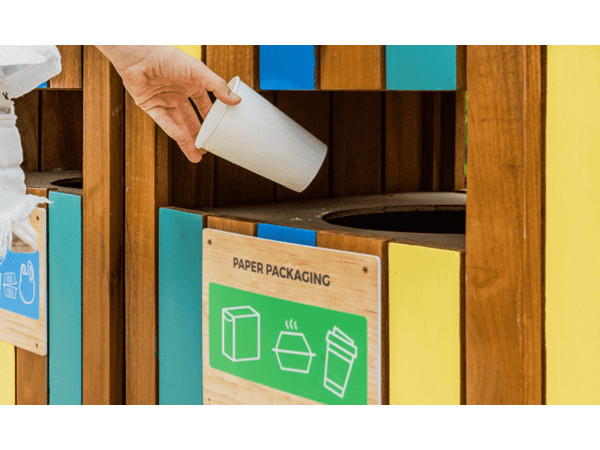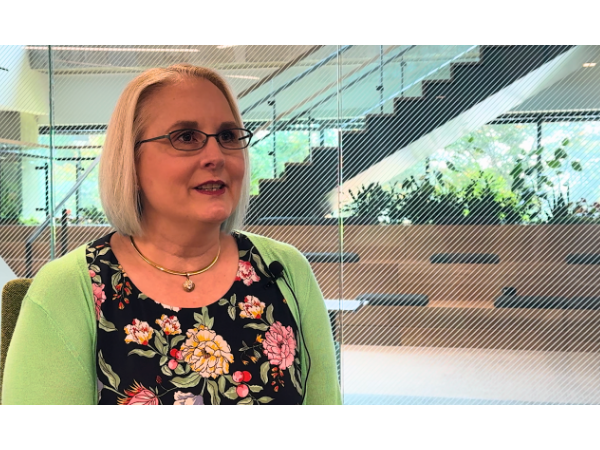News
Advancing Corporate Sustainability Strategies: Super South Takeaways

“Show of hands, who thinks a cup is recyclable?” Michelle Fitzpatrick, vice president and chief sustainability officer for Graphic Packaging International, asked an audience at Super South. “Maybe about 20% of you. The fact is a cup is perfectly recyclable by design.”
Fitzpatrick and other panelists at the climate innovation summit swapped surprising facts, like her paper cups example, about recycling. It turns out, “there are a lot of things out there that can be recycled but aren’t being recovered today,” Fitzpatrick said.
The challenge around recycling paper cups and other types of packaging is multifold:
- Not all communities have access to recycle all packaging items, whether curbside or at a designated recycling collection point.
- Not all facilities have the necessary equipment to properly sort collected recyclable materials.
- Not all recyclable materials have enough market demand to be turned into something new.
Companies can design products to be reprocessed and recycled, but it takes multiple parties to achieve truly circular products. Sustainability is a collaborative effort.
This theme — collaborative innovation — trickled through other questions and answers during the panel “Future Forward: Global Corporations Advancing Sustainability Goals.”
In the video above, get a glimpse of Graphic Packaging CSO Michelle Fitzpatrick at the 2025 Super South climate innovation summit.
What Is Corporate Sustainability?
“Corporate sustainability is a company’s delivery of long-term business value in environmental, social and ethical terms.”
A corporate sustainability strategy is supported by an organization’s top-down commitment to adopt principles that make positive social and environmental impacts, as well as operate ethically and transparently communicate progress. (These are defining elements outlined by the UN Global Compact.) Strategies often include science-based targets that correlate to UN Sustainable Development Goals (SDGs).
Sustainability strategies should align with core business strategies, values and priorities. Sustainability goals impact not only society but also business performance by inspiring innovation, encouraging employee engagement, minimizing risks and enhancing brand reputation.
“We think about how the objectives of those frameworks match where our business can contribute and participate,” Fitzpatrick said. “When you think about packaging, it’s at the center of many sustainability goals.”
As the global population grows, so does consumer demand for more products. “But we need to live within the planet’s natural resource boundaries, and that factors into how we manufacture our packaging,” Fitzpatrick said.
At Graphic Packaging, sustainability efforts start at the source of its paperboard packaging.
“Our packaging is predominantly made with renewable materials that come from the forest,” Fitzpatrick said. “We’re quite committed to sustainably sourcing all the forest materials we use in our operations.
Then, we think about how we design the packaging to improve its functionality and make it more circular. How do we deliver the same performance using fewer resources? How do we also design that package so that, once its job is done, it can be recovered and either recycled or composted so that those resources can go back into other material cycles.”
Teams at Graphic Packaging continuously balance product sustainability with functionality, convenience and efficiency. These design essentials not only serve the core needs of customers and consumers but also reduce resource use throughout the entire supply chain.
Finally, Graphic Packaging teams consider the manufacturing process. “How do we make our products in a way that uses fewer resources, and where we are decarbonizing our operations?” Fitzpatrick said.
This holistic approach to corporate sustainability results in more circular packaging that lowers the company’s overall environmental impact.
Collaborative Innovation on Sustainability Strategies
Corporate sustainability is a long-term business strategy that requires continuous innovation. No one ever “achieves sustainability.” It is a moving target that must be monitored, reassessed and recalibrated. Just as economic and market conditions fluctuate, so do climate drivers, scientific insights and agreed-upon approaches.
Consumer Brands Driving Innovation
“We have lots of great examples of how we collaborate across multiple different stakeholders,” Fitzpatrick said. “The most obvious is collaborating with our customers. They come to us with a packaging challenge that they need to solve, often driven by regulations.”
Take the ban on Styrofoam packaging in certain markets, Fitzpatrick explained. A customer that sells instant noodle cups had to rethink their Styrofoam cup packaging. Working with Graphic Packaging, they transitioned entirely to paperboard cups.
“That took collaboration not only between our customer and our designers but also with our raw material suppliers,” Fitzpatrick said. “We developed a barrier coating inside the cup so it would stand up to the conditions in a microwave. This then makes the product more convenient for the end consumer because now they only have one step to make their noodles instead of two.”

“But our biggest area of collaboration right now is around recycling,” Fitzpatrick said. “We want to increase access rates for packaging that isn’t widely accepted for recycling today, like the cups that we started the conversation with. That takes collaboration between local municipalities, waste haulers, sorting facilities and local paper mills.”
In both examples, Graphic Packaging collaborates across entire value chains to create innovative products and systems that keep waste from going to landfills and natural resources in circulation.
Focused on Sustainability Targets
“There’s lots of internal collaboration that happens organically, too,” Fitzpatrick said. “As we launched our new 2030 sustainability goals, we engaged people across the organization about their role in reducing the carbon footprint of the company.”
One challenge the company uncovered: how to better dispose of its ink waste.
“The plant manager for one of my packaging plants said, ‘We have all these plastic ink buckets that we have to send to a landfill,” Fitzpatrick said. “‘We want to recycle them, but they’re too contaminated. No one will take them.’”
One of Graphic Packaging’s sustainability goals includes reducing greenhouse gas emissions in the value chain (otherwise known as Scope 3 emissions). By reducing the ink plastic packaging waste sent to landfills, the company can reduce this part of its environmental footprint, as well as reduce the supplier’s environmental footprint.
“That plant manager’s frustration launched a collaboration with one of our ink suppliers,” Fitzpatrick said. “How can we work together to create an ink packaging solution that can be recycled and generates less packaging waste to landfill?”
Naturally, the solution Graphic Packaging designed with its ink supplier is a new way to package the ink. Instead of packaging ink entirely in plastic, the two businesses are exploring paperboard packaging replacements with plastic liners.
“They’re still working on prototypes to see how that would work,” Fitzpatrick said. “All of this started with one plant manager saying, ‘I’m tired of sending plastic buckets to landfill. Is there a better way to do this?’”
The Future of Corporate Sustainability
The panel at Super South also discussed how the concept of sustainability has evolved. Panelists see the very word “sustainability” being replaced by terms like “efficiency” and “resiliency.”
“These are certainly very interesting times if we think about how ‘sustainability’ is evolving,” Fitzpatrick said. “The work itself fundamentally stays the same, and it’s just how companies approach it. We need to better connect the sustainability benefits to the operations improvement work we are doing and further embed consideration of sustainability opportunities and risks in business strategy and planning processes.
For large multinational companies working across the globe, you have different drivers in different regions. You still need to meet the same basic underlying objectives across all global regions: to make sure that your customers — and ultimately the end consumers — are receiving what they expect.”


